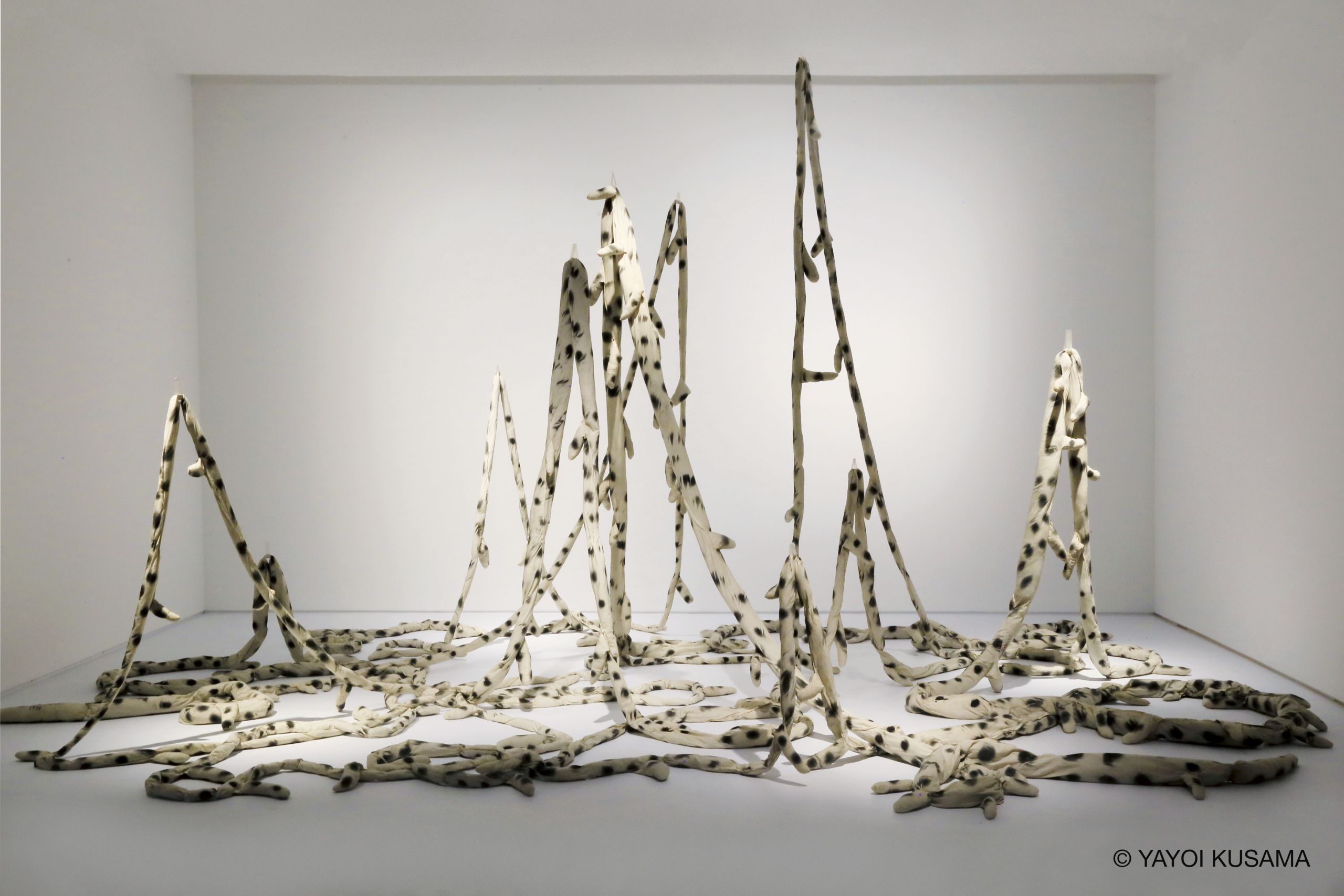Death
“What death signifies, its colors and spatial beauty, the quietude of its footprints and ‘nothingness’ after death. I am now at a stage to create art for the repose of my soul embracing all of these.” Yayoi Kusama.
Kusama’s work constantly addresses the threshold between life and death. A childhood surrounded by the ephemeral existence of plants in the family nursery, an adolescence marked by the war and its consequences, and especially the death of her father and close friend, Joseph Cornell in the mid-1970s, led the artist to consider death not as an ending but as another phase of life that can give rise to a new form. Sometimes, in her creative struggle and despair, the artist longs to free herself from what she describes as the languid weight of life. Nevertheless, she has transformed that desire through her artistic and literary practice, in a sort of therapeutic fantasy and in a spiritual recompense in the “solemn beauty” of death and the loss of the ego as a return to eternity.

